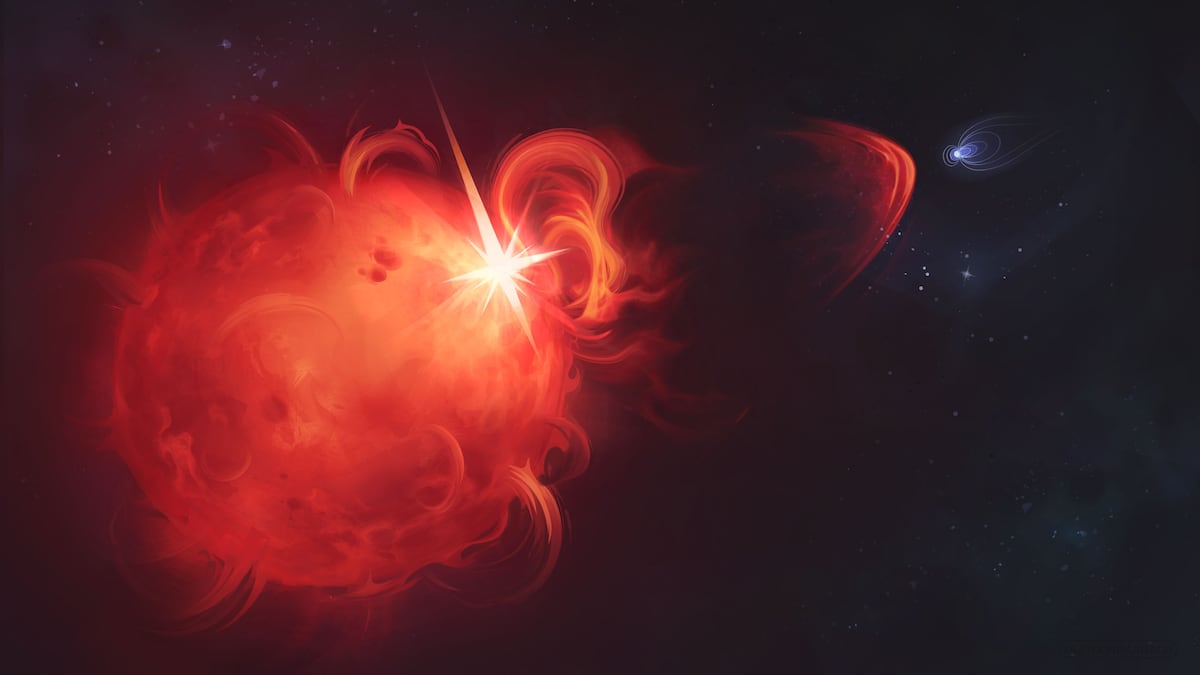
"For years, astronomers have observed the stars, wondering whether storms as violent as those that shake the Sun could erupt elsewhere in the universe. The Sun often hurls gigantic clouds of plasma into space known as coronal mass ejections (CMEs) capable of disrupting space weather, creating dazzling auroras, or rattling the satellites orbiting Earth. But beyond the Sun, no one had ever observed another celestial body doing the same until now."
"An international team of astronomers, combining the sharp vision of the LOFAR radio telescope with the European Space Agency's (ESA) XMM-Newton space observatory, has for the first time detected a massive stellar explosion on a star outside our cosmic neighborhood, the solar system. The star at the center of this event is a red dwarf named StKM 1-1262, located about 40 light-years from Earth, according to a new study published Wednesday in Nature."
A massive stellar explosion was detected from a red dwarf named StKM 1-1262, about 40 light-years from Earth. The eruption produced a burst of radio waves—extremely powerful, brief energy flashes—indicating a colossal magnetized plasma ejection from the star's surface. The magnetic explosion occurred in 1883, and its light reached Earth in 2016. The ejection lasted about a minute and generated a shock wave when moving from the corona into space. The blast was so violent that any nearby planet would likely have lost its entire atmosphere. Observations combined LOFAR radio telescope and ESA's XMM-Newton observatory.
#stellar-coronal-mass-ejection #radio-astronomy-lofar #red-dwarf-stkm-1-1262 #planetary-atmosphere-loss
Read at english.elpais.com
Unable to calculate read time
Collection
[
|
...
]